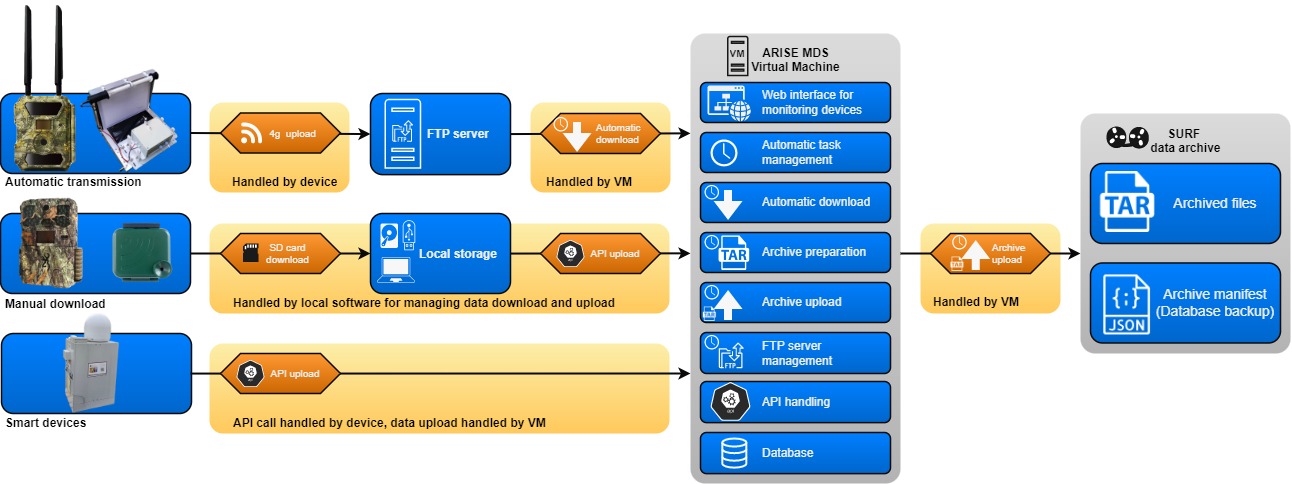Site overview
A summary of the tasks carried out by this site
Purpose
The ARISE-MDS server serves two main purposes:
- Automatically move data from sensors in the field through to cold storage
- Allow the monitoring of sensors remotely in the field.

Import types
Sensors broadly fall into three categories of import types:
- Automatically transmitting sensors.
- These sensors automatically transmit their data to an external data storage. The majority of our devices currently transmit to an FTP server. These external data storages are managed by the ARISE-MDS server, with data being moved automatically into the main server storage and database.
- Manual download sensors.
- These sensors require data to be manually retrieved from the field, typically on SD cards. These data then need to be uploaded to the ARISE-MDS server main storage and database. We facilitate this with local software which can be installed on a user's computer. This software interacts with the ARISE-MDS server's API to easily upload the files.
- Smart devices
- These devices have a sophisticated enough onboard computer that they can directly call the ARISE-MDS server API in order to upload their files directly to the storage and database.
Archiving
Data are regularly automatically archived to the SURF data archive. This involves first bundling the data into TAR files, with a minimum size of 1gb. These data are then uploaded to the appropriate location in the data archive, along with a JSON manifest containing details of the TAR files, their contents and all the appropriate metadata.
For a complete overview of archiving see the archiving overview.
Monitoring
The portal provides several tools to allow the monitoring of devices in the field. A user can view projects, devices, deployments and datafiles to which they have access. Where appropriate, graphs showing a devices current status can be accessed. This allows errors in devices to be detected quickly and easily.
Permissions
Users can be granted permissions at four different levels
- Project level
- A user can access all deployments associated with a project
- Site level
- A user can access all deployments associated with a site
- Device type level
- A user can access a certain device type. Combined with project and site, this allows users to be restricted to a subset of devices within a project or site.
- Deployment level
- A user can be granted access to individual deployments.
These permission levels can be combined where necessary to further subset the deployments to which a user has access or to expand a users access to several projects, sites or deployments.
A user can also be granted permissions to access the API in order to upload files or otherwise add objects to the database.